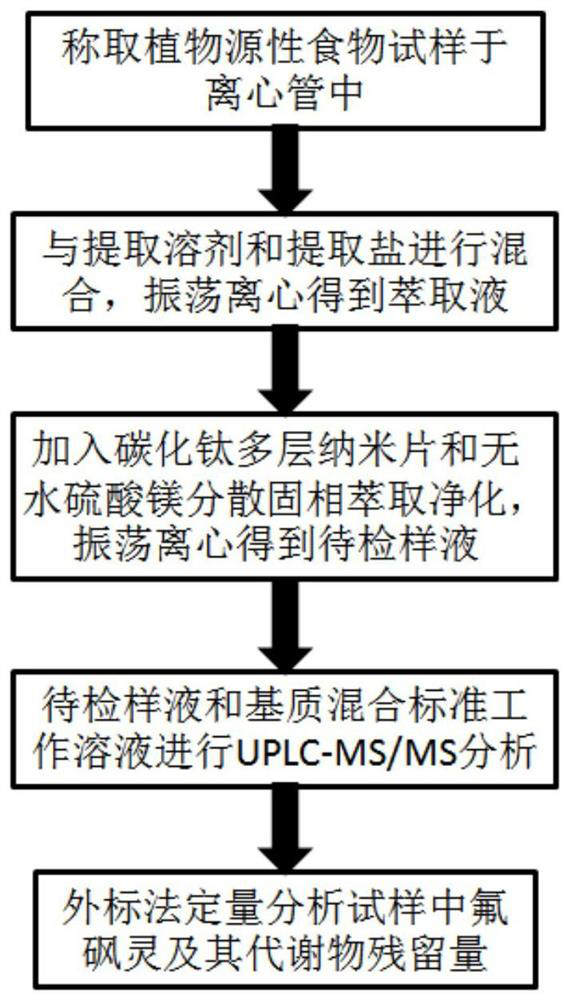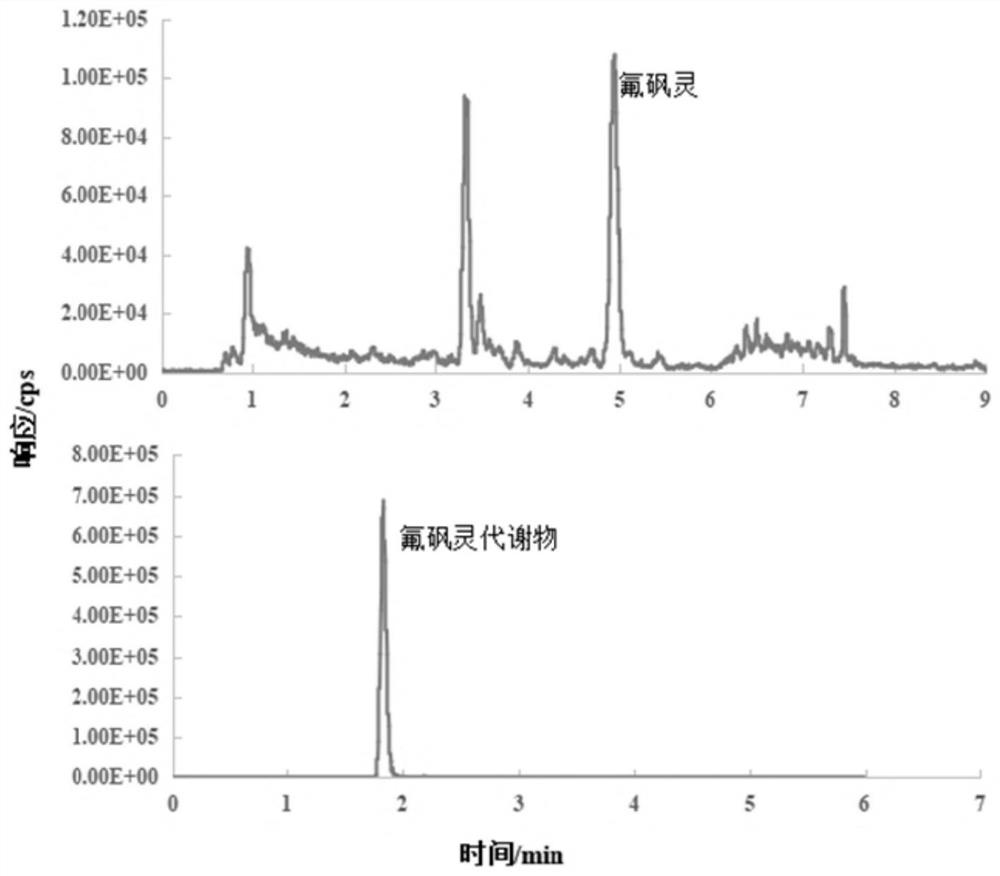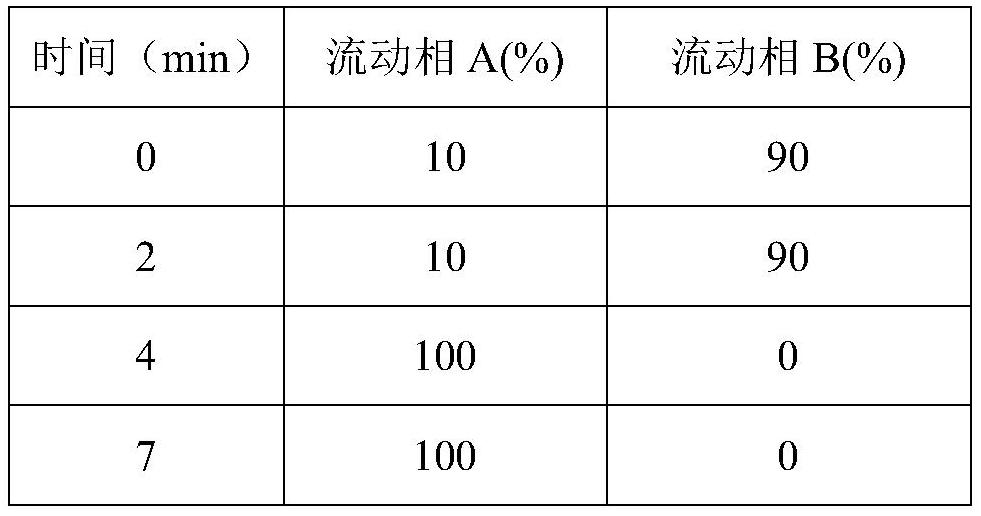Method for detecting residual quantity of disulfuron and metabolite thereof in plant-derived food
A plant-derived, flusulfone-acid technology, which is applied in the direction of measuring devices, instruments, scientific instruments, etc., can solve problems such as easy to interfere with the measurement results
- Summary
- Abstract
- Description
- Claims
- Application Information
AI Technical Summary
Problems solved by technology
Method used
Image
Examples
Embodiment 1
[0052] This example provides a method for determining the residual amount of flusulfone-fin and its metabolites in plant-derived foods. The dried tobacco or tea samples are used as samples to be tested. The determination process is as follows: figure 1 As shown, it specifically includes the following steps:
[0053] S1 extraction: the sample is dried and pulverized, and sieved. Accurately weigh 2.0g of sample (accurate to 0.01g) into a 50mL stoppered centrifuge tube, add 10mL of water, and let it stand for 10min until the sample is fully infiltrated by water; pipette 10mL of acetonitrile solution containing 1% formic acid into the centrifuge tube, Shake at 2000r / min for 3min; then add 4g of anhydrous magnesium sulfate and 1g of sodium chloride to the centrifuge tube, and immediately oscillate on a vortex mixer at 2000r / min for 3min, and the supernatant is the extract.
[0054] S2 purification: pipette 1.0mL of the extract in S1 in a 2mL centrifuge tube (20mg of titanium carbi...
PUM
| Property | Measurement | Unit |
|---|---|---|
| Film diameter | aaaaa | aaaaa |
| Thickness | aaaaa | aaaaa |
Abstract
Description
Claims
Application Information
 Login to View More
Login to View More - R&D
- Intellectual Property
- Life Sciences
- Materials
- Tech Scout
- Unparalleled Data Quality
- Higher Quality Content
- 60% Fewer Hallucinations
Browse by: Latest US Patents, China's latest patents, Technical Efficacy Thesaurus, Application Domain, Technology Topic, Popular Technical Reports.
© 2025 PatSnap. All rights reserved.Legal|Privacy policy|Modern Slavery Act Transparency Statement|Sitemap|About US| Contact US: help@patsnap.com



